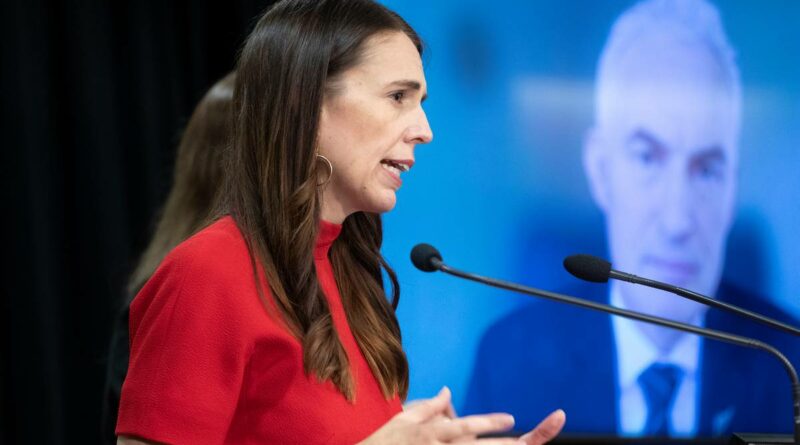Covid 19 Omicron outbreak: Why unvaccinated travellers shouldn’t be let in for the ‘foreseeable’ future
ANALYSIS:
The vaccine pass looks set to be side-lined by the time the borders open to Australians in mid-April, but Prime Minister Jacinda Ardern said there was still a need to keep New Zealand closed to unvaccinated foreign tourists.
This may seem contradictory. It’s like killing the two-class system at home while maintaining it for foreign travellers.
But there’s a good reason.
Now that we’re living with Covid, and will continue to do so after the Omicron peak in the coming weeks, the Government’s aim is to keep transmission low enough for the health system to stay afloat.
Unvaccinated foreigners are far more likely to need hospital care. Fully staffed adult ICU beds, in particular, are in short supply.
So why not keep the two-class system, based on the vaccine pass, by maintaining limits on unvaccinated gatherings at each level of the traffic light system?
By mid-April, we should be nearing the end of the Omicron peak, which is expected to see perhaps as much as half the population catching Omicron.
That shrinks the usefulness of the vaccine pass, due to the massive boost in immunity among the general population – for both the vaccinated and the unvaccinated who have caught the virus.
The immunity boost is also why keeping the gates closed on vaccinated foreign travellers will no longer be necessary, following the peak.
“There aren’t that many implications from people travelling into New Zealand who are fully vaccinated with a pre-travel test, and then with tests on arrival,” said epidemiologist Professor Michael Baker.
“If you think about it, that’s a much more rigorous approach than with people in New Zealand, where not everyone is vaccinated, and not everyone has a test before going out into the community.”
The vaccine pass is also less useful because, with Omicron, the two doses required for the pass isn’t much better than no doses in terms of preventing infection; 20 weeks after a second Pfizer dose, effectiveness wanes to only about 10 per cent.
But after 25 weeks, two doses is still 25 to 35 per cent effective at preventing hospitalisations, according to data from the UK, and 59 per cent effective at preventing death for those aged 50 and over.
Three doses are even more effective at preventing hospitalisation – 90 per cent for the Pfizer vaccine, and only dropping to 75 per cent after 10 to 14 weeks.
Which raises the question: why not require foreign tourists to have had three doses, which are already required for certain Kiwi workers including in health and border settings?
It would undoubtedly further minimise the risk of foreign tourists ending up in hospital. The issue is whether it would minimise it enough to make a meaningful difference, and so far, the Government has decided it wouldn’t.
A two-dose requirement for foreign tourists also aligns with what’s become the norm for most airlines, and international travel in general.
Ardern said there will come a time when unvaccinated tourists will be allowed into New Zealand – but didn’t indicate when.
At least not for the “foreseeable future”, Baker suggested.
“If it’s an avoidable risk, based on a free vaccine available in those countries, then it’s a good restriction to maintain.
“If we follow the pattern of other countries, we will see this peak fade down to maybe 5000 cases a day, but it will still be circulating, and then it may start to take off again.
“I think we’d want to be reassured that no one’s coming into New Zealand unless they’ve been vaccinated. Even if their protection fades from infection, they’re likely to keep some protection against serious illness, long-term.”
The other issue is whether there’s enough breathing space between the Omicron peak and reopening the doors to foreign tourists.
“It’s already peaked in Auckland and it’s peaking in the rest of the country – if it hasn’t already – about now,” Baker said.
“It took about six weeks to get up there and will take another six weeks – through to late April – to get down to a lower equilibrium of a few thousand cases a day.”
Even though the first stage – Australian tourists – will start before then, the numbers are expected to trickle in, rather than come in a deluge.
One of the downsides of reopening is that New Zealand will no longer have the luxury of adapting its Covid response in preparation for a new variant that has already landed in other countries.
With more open borders, a new variant – which could change all of the border settings in a hurry – is more likely to land in New Zealand at the same time as other parts of the world.
This underscores the need for a good surveillance system, which would catch new variants sooner, including ongoing testing at the border and genomic sequencing of border cases.
“This means we can keep a close eye on what is happening at the border,” said Covid-19 modeller Professor Michael Plank.
“We can detect and respond to a new variant as quickly as possible.”
Source: Read Full Article


/cloudfront-ap-southeast-2.images.arcpublishing.com/nzme/YQWQJVBWFR4YZCCXQLTXET4R3U.jpg)

